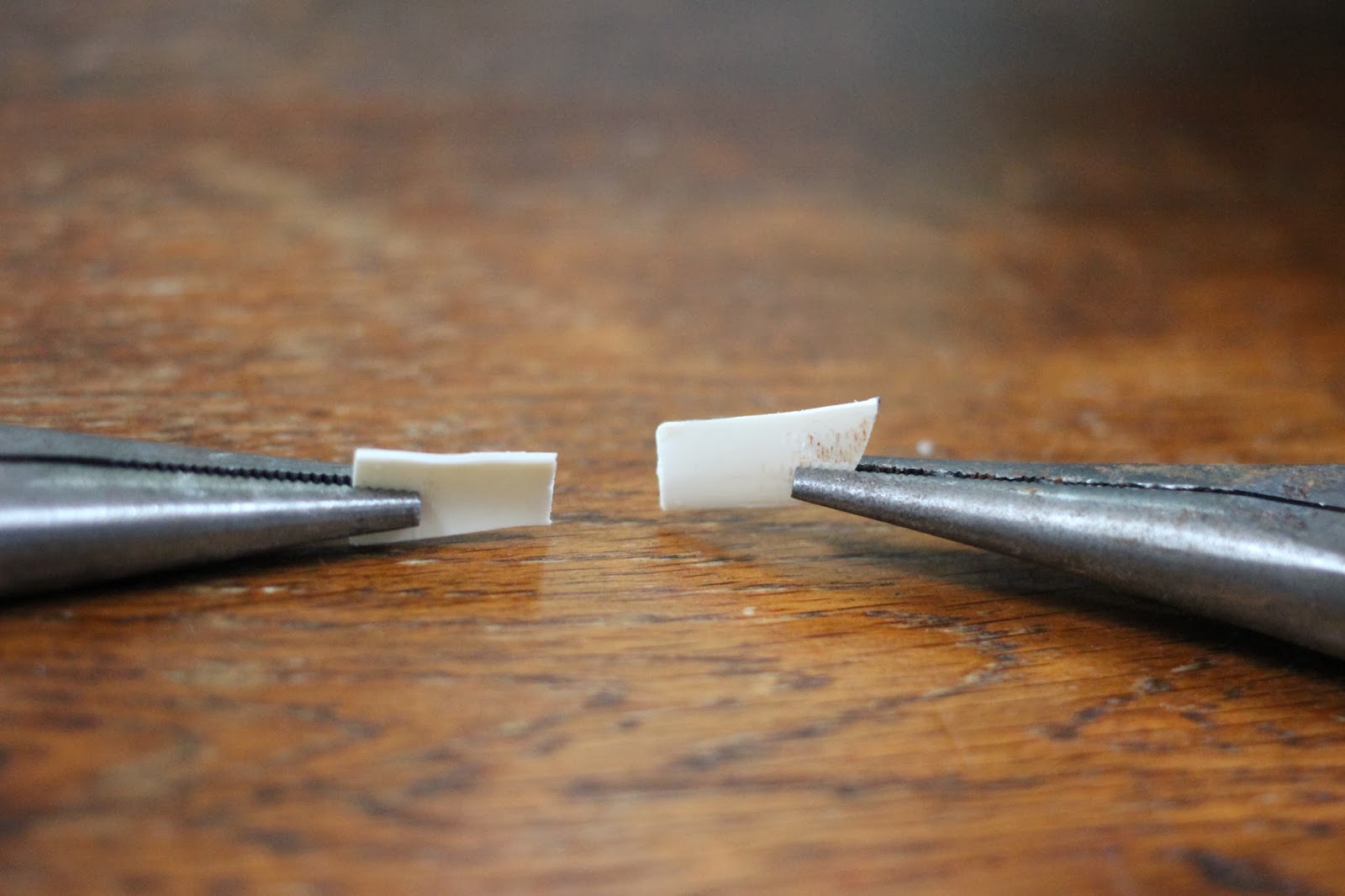Our first class for Digital Fabrication started off very interestingly. We were given a piece of PVC, which is Polyvinyl Alcohol (Not to be confused with Polyvinyl Acetate, which is the wood glue) and told to go do some experiments with it. 10 experiments, to be exact. The material has some very interesting properties. We were given a third of a little cup shape to play with.
By far the most interesting feature of the material is that it dissolves in water, allowing a vast majority of functions with said feature. This property in something solid seems very strange to me, but it's obviously not unique. According to the way PVA is structured, the polymer connections start breaking down when they get into contact with water, and this breaking of the bonds is accelerated by heat.
I've done some experiments with the material, and to be honest, I haven't really had a chance to play with anything like this before. I've tried a whole variety of experiments on it, with interesting results.
Experiment 1: Water
The first experiment I did focussed on one of the most defining features of the material, namely it's property to dissolve in water. I cut a small piece of the material, and then left it in a small glass of water. I stirred it a couple of times, and after a time, came back it, to find that it had completely dissolved into the water. Pretty cool.
Experiment 2: Stretching
Stretching a small piece of the PVA resulted in a rather expected result. It stretched and then ultimately tore, but in a slightly different way to a normal plastic. The tear reminded me more of thick card, minus the fibrous elements.
Experiment 3: 40% Alcohol - 60% Water
This was one of the most interesting experiments, as it really changed the structure of the material without significantly changing the state. I don't fully understand the chemical process that takes place, however that fact that the vodka is mostly water would affect it in a similar way, however perhaps the presence of the alcohol inhibits the way it dissolves. The PVA swelled up and became extremely rubbery and soft to the touch. It's possible that the alcohol was partially absorbed by the PVA to have this effect.
Experiment 4: Burning
This experiment also proved to be an interesting one, as the PVA actually burns like paper, as opposed to melting like plastic. It had a tendency to char, as well as proving to be an odd combination between paper and plastic in terms of the reactions it generates.
Experiment 5: Twisting
Twisting the PVA resulted in a rather expected and similar result to stretching. It was marginally more resistant to the twisting than the stretching, but ultimately it too tore. The material is actually fairly soft and doesn't have much resistance to physical disfigurement at all.
Experiment 6: Bleach
The bleach reacted relatively minimally with the PVA, merely softening it and dissolving it a bit. I must admit I was a little bit disappointed, as I expected the bleach to do something. It did make the PVA swell up a bit, much like the alcohol, however, rather than the alcohol, which kept the PVA's shape for the most part, the bleach turned it into more of a gelatinous pile. Very disgusting. Plus, it stunk of chlorine.
Experiment 7: Freezing
Freezing the PVA resulted in something very interesting. The PVA mostly dissolved in water, as expected, however, once frozen and then smashing the ice cubes, it proved to have slightly changed the structure of the ice. The ice was much cloudier (due to the presence of the dissolved PVA) and the crystalline structure also looked significantly different to the original ice structure. Not sure how different exactly without a microscope.
Experiment 8: Dissolving & Evaporation
This experiment was the most interesting by far. Evaporating the water off the dissolved PVA meant that the PVA re-bonded and formed a very fine, very pliable, not very strong film. This film peeled off the baking paper with much difficulty and expletives, but the result was quite interesting nonetheless. Apparently, when doped with iodine, PVA can be used to polarize light, which could give it a use for things like sunglasses or protective containers.
Sadly I didn't quite get to 10 experiments, but now I have enough to work with hopefully.

















No comments:
Post a Comment